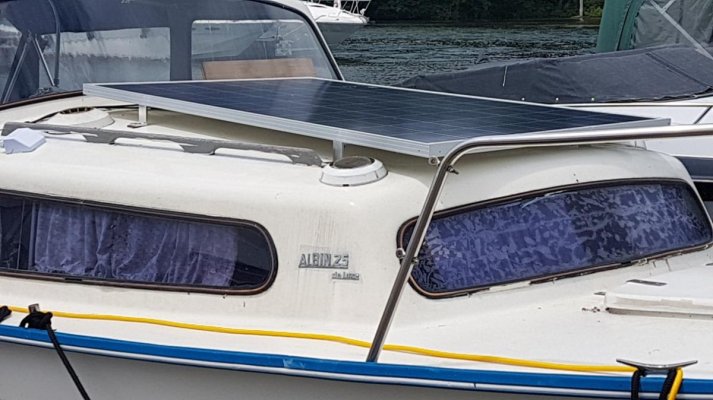Say you have a 1000AH bank, that's big enough for a small A/C unit, huge by most mobile standards. If that's lead 500AH usable for longevity, and say that's how much needs restoring.
If it's old-school FLA, from 50% SoC to say 80% will take 2+ hours, since around 150A is the maximum current the chemistry will accept, so forget about your KW charger.
After the Absorb voltage setpoint is passed, the resistance rises, current accepted declines, that last 80-100% -which you DO need to get to for bank longevity - will likely take at least 4-5 hours, very quickly current amps dropping to low two-digits, finally down to the defined-full point below 10A.
That's where it would be stupid to devote dino juice to just charging, and exactly where you get more than your money's worth out of solar.
With a smaller bank you easily may never need to run a motor unless you want to for other reasons.
With a higher CAR lead chemistry like quality AGM, you get past .5C rates, if your charger/alts can put out 500A, in theory you get that early stage done in half the time, but the long tail will take nearly as long.
LiFePO4 is even faster acceptance, and **never** needs to get to 100%, so that buys a lot more flexibility, no need for solar if you don't like it.
But at seven+ times the cost plus specialized charge sources required, call it an extra $2K on top.
For liveaboards and others on the hook away from shore long periods, solar is a no-brainer.
If it's old-school FLA, from 50% SoC to say 80% will take 2+ hours, since around 150A is the maximum current the chemistry will accept, so forget about your KW charger.
After the Absorb voltage setpoint is passed, the resistance rises, current accepted declines, that last 80-100% -which you DO need to get to for bank longevity - will likely take at least 4-5 hours, very quickly current amps dropping to low two-digits, finally down to the defined-full point below 10A.
That's where it would be stupid to devote dino juice to just charging, and exactly where you get more than your money's worth out of solar.
With a smaller bank you easily may never need to run a motor unless you want to for other reasons.
With a higher CAR lead chemistry like quality AGM, you get past .5C rates, if your charger/alts can put out 500A, in theory you get that early stage done in half the time, but the long tail will take nearly as long.
LiFePO4 is even faster acceptance, and **never** needs to get to 100%, so that buys a lot more flexibility, no need for solar if you don't like it.
But at seven+ times the cost plus specialized charge sources required, call it an extra $2K on top.
For liveaboards and others on the hook away from shore long periods, solar is a no-brainer.



